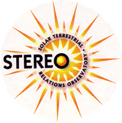LET Data and Plots
LET Data Documentation, Caveats, NotesJuly 20, 2015: Change in LET Viewing Direction: After solar conjunction, the two STEREO spacecraft have been rolled 180 degrees about the spacecraft-Sun line in order to allow the high gain antenna to remain pointing at Earth. Consequently, the pointing direction of the LET instrument is now PERPENDICULAR to the nominal Parker spiral direction in the ecliptic. This will remain the nominal viewing direction (other than for brief periods of rolls or off-points for instrument or antenna calibrations) until the spacecraft pass by Earth again in 2023. Because the two LET fans each view more than +/- 65 degrees in the ecliptic from their nominal pointing directions, LET will still be sensitive to particles arriving from >70% of the ecliptic plane.
Time-series Plots
ASCII Data Files
- Ahead
- Behind
Note: LET 1-Minute data in CDF format are available from the IMPACT Level 1 Data site at Berkeley SSL, and from CDAWeb.
Usually, the data for month N will be validated and released during the first week of month N+2.
Event Lists, and Days of Elevated Intensity
Proton intensities, spectral indices, and plots for days when the LET daily averaged intensity of 10-15 MeV protons exceeded 1x10-4 (cm2-sr-sec-MeV)-1.
Preliminary SEP and CIR event lists, and corresponding plots, based on 3-hour averaged 1.8-3.6 MeV proton rate
Warning: The event lists and plots are an ongoing work-in-progress, and subject to change.
Proton Anisotropy Plots and Movies
Yearly browse plots of LET 4-6 MeV proton sectored rates; see the user's guide for more details.
Behind
Ahead
CAUTION: Spacecraft orientation may affect
what you see in these plots. See "View Direction Movies" (below),
or these spacecraft roll angle plots.
Anisotropy movies for STEREO LET H 4-6 MeV sectored intensities. See the user's guide for more details.
View Direction Movies
The LET instrument has 16 viewing aperatures and in these Quicktime movies the boresights of these 16 sectors are shown in the RTN coordinate system. While these movies were specifically designed for LET, they can be used by anyone wishing to know something about the orientation of the spacecraft as a function of time. See the user's guide for more details.
